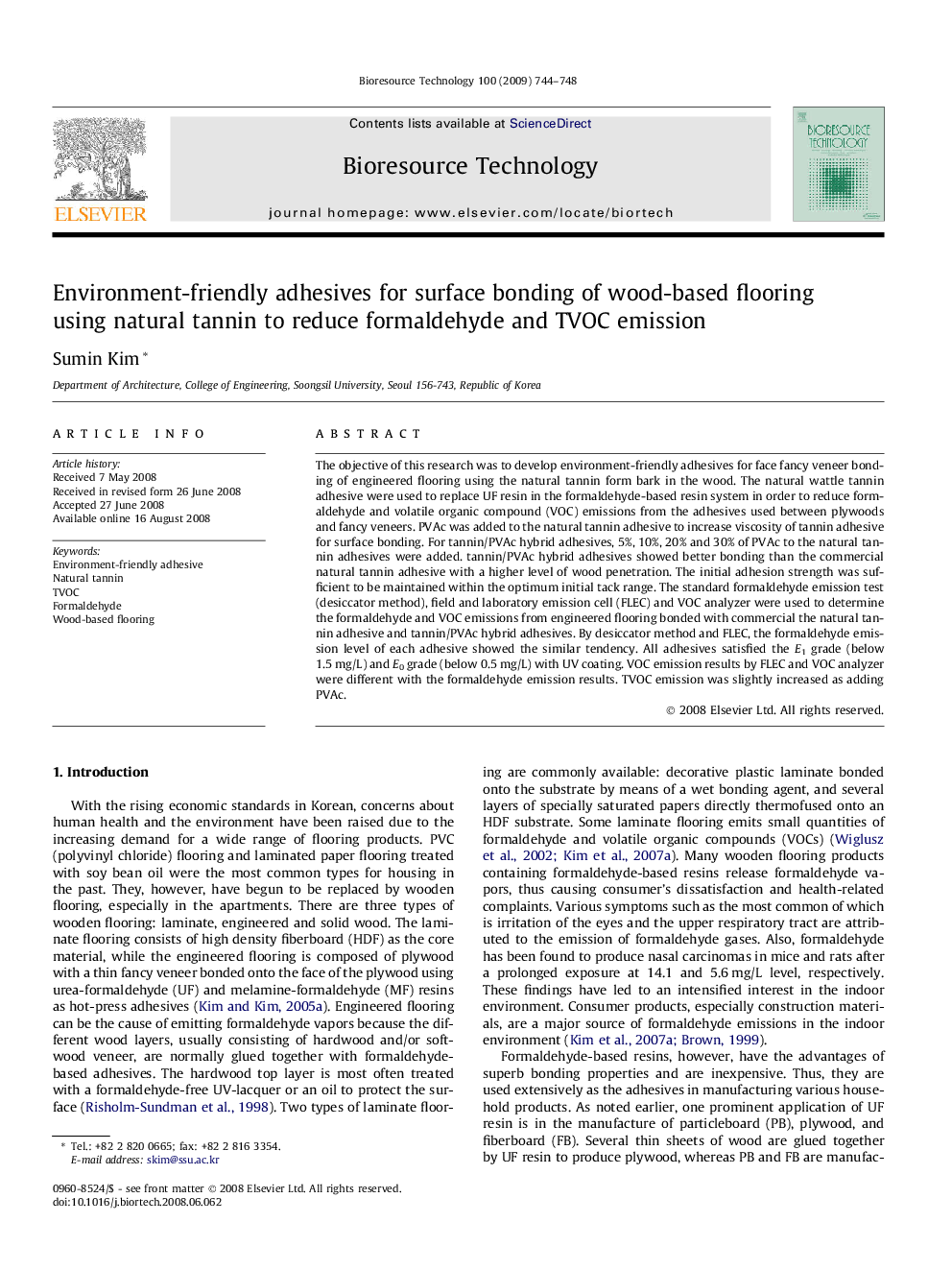| Article ID | Journal | Published Year | Pages | File Type |
|---|---|---|---|---|
| 683753 | Bioresource Technology | 2009 | 5 Pages |
The objective of this research was to develop environment-friendly adhesives for face fancy veneer bonding of engineered flooring using the natural tannin form bark in the wood. The natural wattle tannin adhesive were used to replace UF resin in the formaldehyde-based resin system in order to reduce formaldehyde and volatile organic compound (VOC) emissions from the adhesives used between plywoods and fancy veneers. PVAc was added to the natural tannin adhesive to increase viscosity of tannin adhesive for surface bonding. For tannin/PVAc hybrid adhesives, 5%, 10%, 20% and 30% of PVAc to the natural tannin adhesives were added. tannin/PVAc hybrid adhesives showed better bonding than the commercial natural tannin adhesive with a higher level of wood penetration. The initial adhesion strength was sufficient to be maintained within the optimum initial tack range. The standard formaldehyde emission test (desiccator method), field and laboratory emission cell (FLEC) and VOC analyzer were used to determine the formaldehyde and VOC emissions from engineered flooring bonded with commercial the natural tannin adhesive and tannin/PVAc hybrid adhesives. By desiccator method and FLEC, the formaldehyde emission level of each adhesive showed the similar tendency. All adhesives satisfied the E1 grade (below 1.5 mg/L) and E0 grade (below 0.5 mg/L) with UV coating. VOC emission results by FLEC and VOC analyzer were different with the formaldehyde emission results. TVOC emission was slightly increased as adding PVAc.
